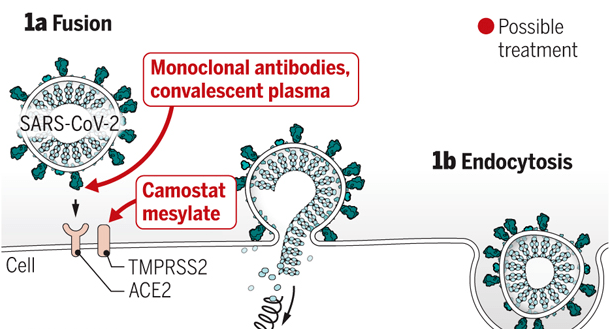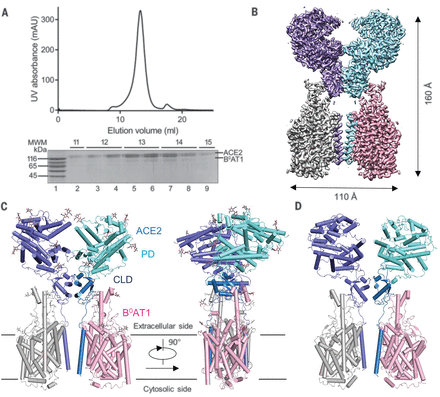One of the most important things we need to understand is how the COVID-19 (also called SARS-CoV-2) binds to and infects human cells (Figure 1). Two recent research papers provide a number of disturbing pieces of information about this process.

A new paper in the journal Nature by investigators from University of Minnesota shows that the spike protein on the COVID-19 virus has evolved from a bat coronavirus to bind very tightly to the human cell target, ACE2 protein. This evolution has directly led to the current pandemic.
While there is some binding of bat coronavirus, there are (at least) 5 different mutations (changes) that have happened. These mutations have now made the COVID-19 binding protein almost “perfect” in binding to the human ACE2 protein (Figure 2). The binding of the COVID-19 spike protein for human cells is very high, reaching levels similar to some of the best antibodies (Kd=10-9).

In Science magazine investigators from Westlake University and Tsinghua University in China modeled the interaction of the spike protein with the cellular target ACE2. They found that this resulted in a dimer of the viral spike protein binding to two of the cell ACE2 proteins. This makes the interaction of COVID-19 with human cells extremely tight!

There is a lot of disconcerting information from these studies. First, COVID-19 did not just appear but has aggressively evolved to infect humans. This has been a progressive process that has led to a virus very efficient in infecting human cells. There are several implications of this remarkable virus binding.

First, the high affinity binding of COVID-19 for the ACE2 protein on respiratory epithelial cells may be a reason that this virus infects and replicates in the nose and the throat. This is in comparison to SARS where the virus appears to only infected the lungs. Binding in the nose and throat may allow people with few symptoms to spread the virus.
Another piece of bad news is that the high affinity binding of the virus to target cells may make it harder to develop a vaccine. Very strong antibodies would be necessary to block the virus binding to the cell, so the vaccine would need to be very potent to induce a protective immune response.
The somewhat good news is that the virus has evolved so well it may have reached its zenith! Any further mutations in the spike binding protein would likely make the virus less virulent (potent). This may protect us from the development of other, more severe strains of COVID-19 and explain why more virulent strains have not developed thus far.
I am learning so much from your blogs, Dr. Baker, and I always forward them to friends and colleagues who I think would be interested. Thank you again for your time, effort and expertise.
LikeLiked by 1 person
What are the chances that this expert virus developed on its own? Do viruses have DNA? Could this virus have been created/mutated in an experimental lab? If so, would there be any markers that could be traced to the source?
LikeLike
The mutations are not anything one would have engineered in. Nature is a better engineer. Since this is a RNA rather than DNA virus, it mutates more frequently, so better viruses would pop up quickly by natural selection. This data shows that COVID-19 has clearly been “cooking” in humans for a while.
LikeLike